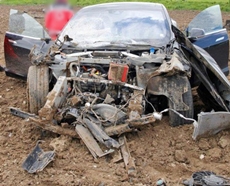Florida death puts big question-mark on Tesla autopilot
02 Jul 2016
The revelation this week that a Tesla Model S driver in Florida was killed in May while operating his car in self-driving mode has put pressure on Tesla Motors' claims that its electric cars are not only cleaner, but safer and more innovative than models made by other automakers.
 Tesla co-founder and chief executive Elon Musk's confidence in his technology has seemed boundless, particularly when the company announced last year that it would equip its flagship Model S sedans with a self-driving feature called Autopilot that was still in its testing phase. The technology was so out in front of federal highway regulations that there were no rules against it.
Tesla co-founder and chief executive Elon Musk's confidence in his technology has seemed boundless, particularly when the company announced last year that it would equip its flagship Model S sedans with a self-driving feature called Autopilot that was still in its testing phase. The technology was so out in front of federal highway regulations that there were no rules against it.
But with the Florida accident, Musk's determination to push the limits has hit its most formidable roadblock.
The first person to die in a US crash involving a car in self-driving mode was the tech-savvy 40-year-old owner of a Tesla Model S who nicknamed his car "Tessy" and praised its sophisticated 'Autopilot' system.
This has earned the dubious distinction of being the first known fatality in a vehicle being operated by computer systems, as 'Tessy' drove straight into an obstacle.
The question now is how much longer Musk and Tesla can continue to defy auto industry convention in trying to stay so far ahead of the competition. A major point of contention is the Autopilot feature and the decision to make it available to car owners while it was in ''beta test'' mode - a term typically applied to software that a company releases on an experimental basis.
''I can't think of another example of anything like this delivered in a beta phase in the automotive world,'' Ron Montoya, an analyst with the auto research firm Edmunds.com, told The New York Times. ''Everything is tested up and down before it comes out.''
Even some Tesla owners, many of whom can be cultishly devoted to the brand, now question whether the self-driving technology is as safe as advertised.
''It gives you a false sense of security,'' said Pete Cordaro, a Model S owner who used Autopilot in a loaner when his Tesla vehicle was being repaired. ''You get comfortable and think you can take your hands off the wheel, but you really can't.''
Auto industry executives and analysts wondered aloud on Friday whether Tesla had miscalculated by introducing a self-driving feature that was perhaps not ready to live up to Musk's pronouncements. In April, he told a conference in Norway, ''The probability of having an accident is 50 per cent lower if you have Autopilot on.''
Tesla declined to comment on Friday, but critics were not so reticent.
''They've always had this attitude of invincibility, and perhaps promising more than their cars can deliver,'' Joseph Phillippi, president of the consulting firm AutoTrends, told NYT. ''But what can they say about a self-driving car that drove straight into a tractor-trailer?''





















